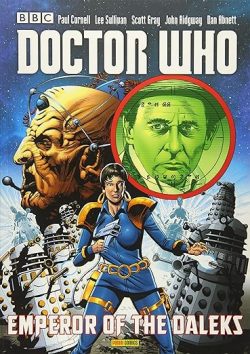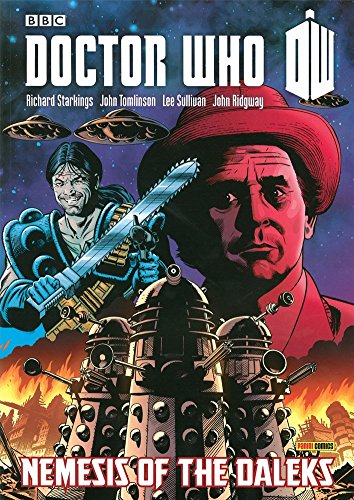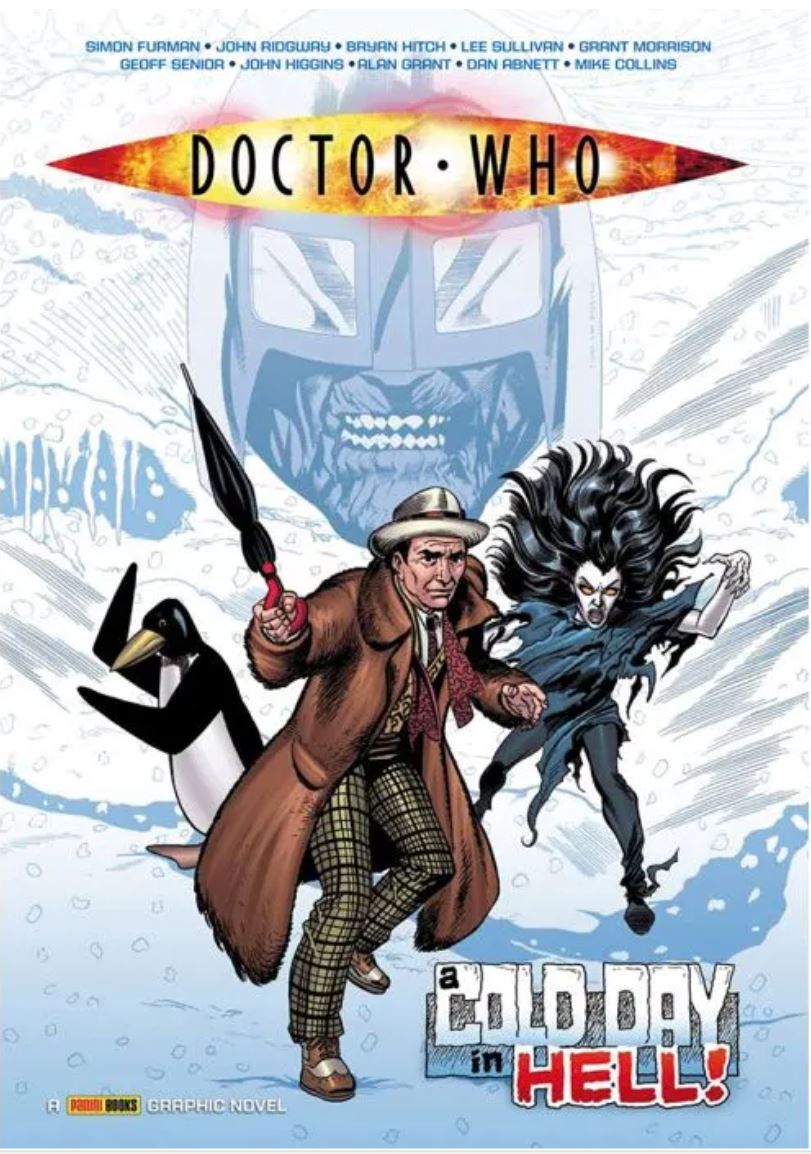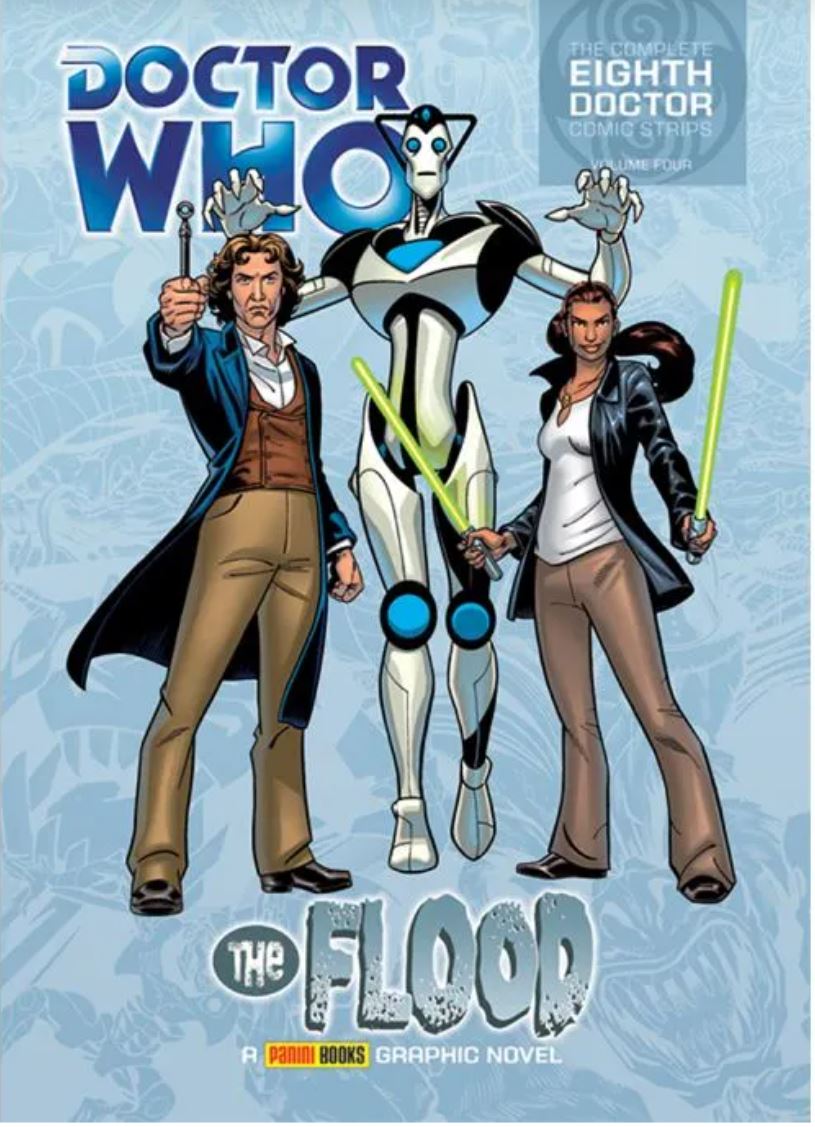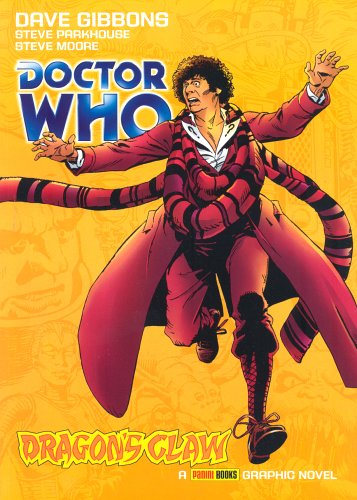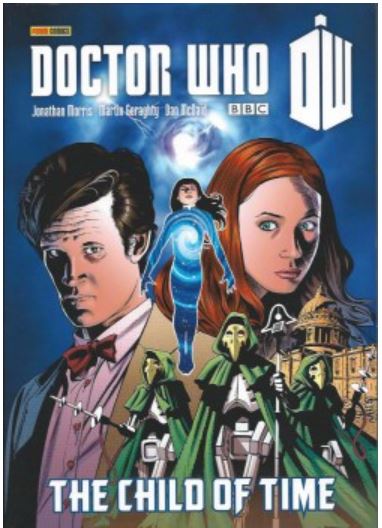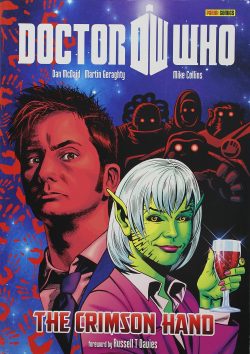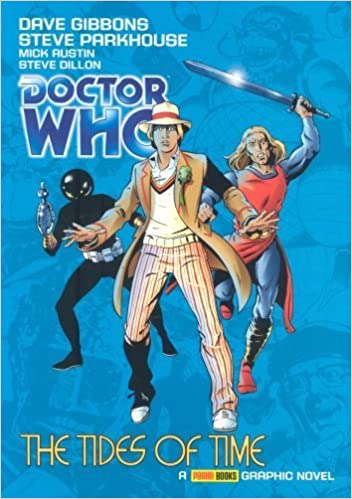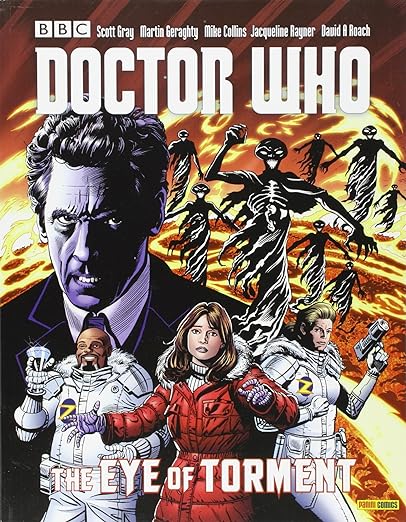
By Scott Gray, Mike Collins, Jacqueline Rayner, Martin Geraghty, David A. Roach & various (Panini Books)
ISBN: 978-1-84653-673-1 (TPB)
Win’s Christmas Gift Recommendation: A Timely Seasonal Treat… 8/10
Today is the 60th Anniversary of Doctor Who. Here’s another Timey-Wimey treat to celebrate a unique TV and comics institution in a periodical manner …
We Brits love comic strips, adore “characters” and are addicted to celebrity. The history of our comics includes an astounding number of comedians, Variety stars and television actors: such disparate legends as Charlie Chaplin, Arthur Askey, Charlie Drake and so many more I’ve long forgotten and you’ve likely never heard of.
As much adored and adapted were actual shows like Ace of Wands, Timeslip, Supercar, The Clangers and countless more. If we watched or listened, an enterprising publisher made printed spectacles of them. Hugely popular anthology comics like Radio/Film Fun/TV Fun, Look-In, TV Comic, TV Tornado, and Countdown would translate light entertainment favourites into pictorial joy. It was a pretty poor star or show that couldn’t parley the day job into a licensed strip property…
Doctor Who debuted on black-&-white televisions across Britain on November 23rd 1963 with episode 1 of ‘An Unearthly Child’. Months later in 1964, TV Comic began a decades-long association, as issue #674 began ‘The Klepton Parasites’ – by an unknown author with the art attributed to illustrator Neville Main.
On 11th October 1979, Marvel’s UK subsidiary launched Doctor Who Weekly. Turning monthly in September 1980 (#44) it’s been with us – via various iterations – ever since: proving the Time Lord is a comic star of impressive pedigree, not to be trifled with.
Panini’s UK division ensured his comics immortality by collecting all strips of every Time Lord Regeneration in a series of graphic albums – although we’re still waiting for digital versions. Each time tome focused on a particular incarnation of the deathless wanderer, with this one gathering almost a year’s worth of stories plucked from the annals of history and the Terran cover dates August 2014 to August 2015. These yarns all feature The Twelfth Doctor as played by Peter Capaldi in a collection of full-colour episodes all given hues from James Offredi and letters by Roger Langridge.
It all kicks off with eponymous shocker ‘The Eye of Torment’ (Doctor Who Magazine #477-480, October-December 2014). Written by Scott Gray and drawn by Martin Geraghty – with inks from infallibly rewarding David A. Roach – it finds a newly-minted incarnation of the Time Lord and capable companion Clara Oswald fetch up inside a spaceship traversing the surface of the sun.
With inescapable flavours of Armando Iannucci’s 2020 comedy sci fi vehicleAvenue 5, the good ship Pollyanna is manned solely by women working for gigajazillionaire Rudy Zoom: a rich, over-achieving narcissist in love with his own legend. Surprisingly, he’s not the actual problem: that would a semi-sentient predatory alien infection imprisoned eons ago by Sol’s gravity. “The Umbra” mimic humanoid form: magnifying and feeding on despair. Once the horror broaches Pollyanna’s invulnerable hull, it/they start picking off the crew until the newcomers find a way to stop it/them and escape…
The epic yarn leads directly into the ‘The Instruments of War’ (DWM #481-483, January-March 2015) wherein writer/artist Mike Collins, ably assisted by Roach) deposit the time travellers in Earth’s Sahara just as German General Erwin Rommel is preparing to finish the Afrika campaign. Sadly, that’s when an agent of the Rutan Horde finally disinters a world-reshaping weapon long lost by their eternal arch-enemies The Sontarans…
Forced to ally with a few of the Sontaran clone-warriors, assorted Germans of various philosophies, righteously rebellious Tuaregs and the living enigma of an honourable warrior fighting for the wrong side, The Doctor and Clara are initially separated but soldier on to save everyone with a degree of success…
Skipping #484, we next arrive as south as we can get for some ‘Blood and Ice’ served up by Jacqueline Rayner, Geraghty & Roach, with actual schoolmarm Clara and the tall, rude one claiming to be Ofsted inspectors giving a college at the bottom of the world a cautious once-over. It’s 2048, the Antarctic Treaty protecting the polar continent from resource exploitation is about to expire and something strange is happening at Snowcap University: something Dr. Patricia Audley is very unhappy to acknowledge and a situation she is working very hard to remedy. However, even with fatal accidents, mutants appearing and students vanishing, both our heroes are a bit off their game. Fans will recall that on TV, Clara had been splintered into a million alternate versions scattered throughout the timestream and finding one of herself at Snowcap has truly unsettled her. The Doctor also has qualms: last time he was here it was a military base filled with cybermen and resulted in the death of his first generation (First Doctor William Hartnell, keep up, keep up!) and first re-generation…
The disorientation doesn’t stop them solving the riddle of the place, but not before a lot of people are dead or worse…
The dramas conclude in fine style and traditional form as a holding pattern allowing the TV Doctor’s debut to catch up with his print incarnation allows DWM #475-476 to deliver a Gallifreyan-adjacent sidebar saga from Gray, Collins, Roach, Offredi & Langridge. Set during London’s Great Exhibition of 1851 ‘The Crystal Throne’ is an untold adventure of “The Paternoster Gang” (Silurian Madame Vastra, her human wife Jenny Flint and their butler Sontaran Strax) who – with assorted associates – oppose weird terror, scurrilous sedition and deranged genetic meddler Lady Cornelia Basildon-Stone for rule of the British Empire. The battle at “The Crystal Palace” is made harder by their ruthless foe, who remakes men into insectoid monsters; employing stolen Silurian technology…
Supplemented with fascinating insights from all the creatives involved in each tale and augmented by tons of sketches and other pre-publishing artwork in the Commentary section, this is a splendid book for casual readers, a fine shelf addition for dedicated fans of the show and a perfect opportunity to cross-promote our particular art-form to anyone minded to give comics another go…
All Doctor Who material © BBCtv 2015. Doctor Who, the Tardis and all logos are trademarks of the British Broadcasting Corporation and are used under licence. All other material © 2017 its individual creators and owners. Published 2015 by Panini. All rights reserved.


